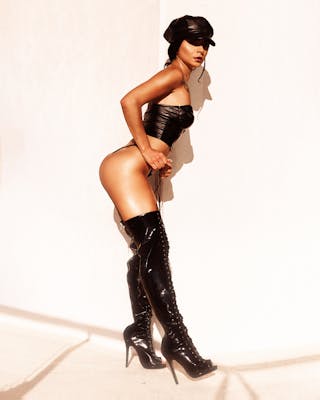Creating An Asexual Character For TV Showed Me We Have A Way To Go
Are you ready to dive into the world of unconventional dating in Crawley? It's a work in progress, but there's so much to explore! From unique relationship dynamics to the diverse spectrum of human sexuality, there's always something new to learn. If you're curious about the BDSM dating scene in Crawley, check out this intriguing article for an inside look at this fascinating subculture.
As a fan of television and a member of the asexual community, I was ecstatic when I heard that a popular show was introducing an asexual character. Finally, I thought, representation for my identity on mainstream media. However, as I watched the episodes featuring this character, I couldn't help but feel that the portrayal fell short of accurately representing asexuality. It made me realize that we still have a long way to go in terms of creating authentic and respectful representation for asexual individuals in the media.
Check out this review of the BlackChristianPeopleMeet app and see why you should give it a try!
The Importance of Representation
Discover the exciting world of Boston escorts and experience it for yourself.
Representation matters. Seeing people who look like us, live like us, and love like us on TV validates our experiences and makes us feel seen and heard. For asexual individuals, who often feel marginalized and misunderstood, seeing a character who shares their identity can be incredibly powerful. It can help to break down stereotypes and misconceptions, and educate the public about asexuality.
Learn valuable tips for maximizing your dating success in Chula Vista!
The Problem with Asexual Representation
Unfortunately, the representation of asexuality on TV often falls short. Asexuality is a complex and nuanced identity, but it is often reduced to a punchline or a plot device. Characters are portrayed as robotic, emotionless, or simply waiting for the right person to come along and "fix" them. These portrayals not only reinforce harmful stereotypes but also fail to capture the rich and diverse experiences of asexual individuals.
Creating an Authentic Asexual Character
So, how can we create authentic and respectful representation for asexual characters on TV? It starts with listening to asexual individuals themselves. Consulting with asexual writers, activists, and community members can help TV creators to better understand the nuances of asexuality and avoid harmful stereotypes.
Additionally, it's important to portray asexual characters as fully realized individuals with their own hopes, dreams, and desires. Asexuality is just one aspect of a person's identity, and it should be treated as such on TV. Asexual characters should have their own storylines, motivations, and relationships, just like any other character.
The Role of Dating and Relationships
One area where asexual representation often falls short is in the portrayal of dating and relationships. Asexual individuals can and do have fulfilling and meaningful relationships, but this is rarely reflected on TV. Instead, asexual characters are often portrayed as lonely or incomplete without a romantic or sexual partner.
It's important for TV shows to depict asexual characters forming deep connections with others, whether they be romantic, platonic, or familial. These relationships should be portrayed as valid and fulfilling, without the need for sexual or romantic attraction.
Moving Forward
While the representation of asexual characters on TV still has a long way to go, there are signs of progress. More and more shows are beginning to introduce asexual characters, and some are even consulting with asexual individuals to ensure authentic representation.
As viewers, we can also do our part by supporting shows that handle asexual representation with care and respect, and calling out those that fall short. By raising awareness and advocating for better representation, we can help to create a more inclusive and accurate media landscape for asexual individuals.
In conclusion, the introduction of an asexual character on a TV show was a step in the right direction, but it also highlighted the work that still needs to be done. By listening to asexual individuals, portraying asexuality as a valid and diverse identity, and depicting asexual characters in fulfilling relationships, TV shows can create more authentic and respectful representation for asexual individuals. As viewers, we can support these efforts and advocate for better representation in the media.
- https://sexting.campsupernow.com/posts/intersex-definition-and-allyship-guide/
- https://sex-chat.thehottieandthenottie.com/posts/bbcs-sex-on-the-couch-is-here-to-teach-us-all-so-much-about-sex-and-relationships/
- https://dating-website.fu-direct.net/posts/cat-person-film-shows-why-women-have-charity-sex-with-men/
- https://online-dating.campsupernow.com/posts/is-dakota-johnson-bisexual/
- https://online-hookup.themountaintopplay.com/posts/my-best-sex-ever-was-when-i-dominated-him/
- https://hookup-blog.campsupernow.com/posts/i-didnt-know-abusive-samesex-relationships-existed-until-i-was-in-one/
- https://location-dating.ua-sex.com/posts/the-role-of-humor-in-building-romantic-connections/
- https://dating-blog.ua-sex.com/posts/5-sex-positions-for-deep-penetration-best-deep-penetration-sex-positions/
- https://find-a-girlfriend.campsupernow.com/posts/how-to-come-at-home-for-christmas-expert-sex-tips-for-the-holidays/
- https://online-dating.timebombrecordings.com/posts/what-men-want-you-to-do-with-their-balls-during-sex/
- https://online-personals.getweps.com/posts/what-does-it-mean-to-be-aegosexual/
- https://hookup.themountaintopplay.com/posts/
- https://chatting.thehottieandthenottie.com/posts/my-best-sex-ever-was-with-a-model/
- https://flirting.campsupernow.com/posts/honeymoon-sex-stories-how-much-sex-couples-had-on-their-honeymoon/
